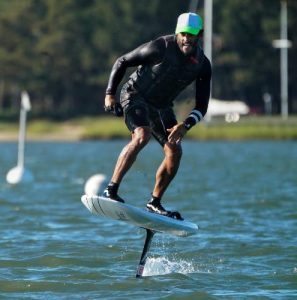Fast-Charging Batteries Foil: Speed or Safety?
In the evolving world of electric water sports, the advent of fast-charging batteries foil technology marks a significant leap forward. This innovation promises to reduce downtime dramatically, keeping riders on the water longer and enhancing the overall experience. However, as with any technological advance, it prompts a critical question: does this focus on speed compromise safety? Let's dive into the details, examining the data behind these batteries and their impact on the sport.

The Evolution of Charging Speed
Recent advancements have seen fast-charging batteries capable of recharging e-foil batteries to full capacity in as little as 90 minutes. This is a stark contrast to earlier generations, which required upwards of four hours for a complete charge. Such improvements are not just about convenience; they represent a significant enhancement in battery technology, enabling users to spend more time engaging in the sport they love.
Balancing Speed with Safety
At the heart of fast-charging technology is a delicate balance between speed and safety. Manufacturers have made significant strides in developing batteries that not only charge quickly but do so without compromising their integrity or the user's safety. These fastcharging batteries foil are equipped with sophisticated management systems that monitor temperature, voltage, and current, preventing overheating and maintaining optimal conditions throughout the charging process.
The Technical Breakthroughs
The secret to the success of these batteries lies in their advanced chemistry and architecture. Utilizing materials like lithium iron phosphate (LiFePO4), known for its thermal stability and safety profile, manufacturers have been able to push the boundaries of charging speed. Moreover, the integration of cooling systems within the battery packs further mitigates the risk of overheating, ensuring that the rapid influx of power does not lead to dangerous conditions.
Safety Protocols and Standards
Safety remains paramount, with these batteries undergoing rigorous testing to adhere to international safety standards. From short circuit and overcharge protection to environmental stress testing, every aspect is scrutinized to ensure that speed does not come at the expense of safety. Manufacturers and regulatory bodies work closely to continuously update and enforce these standards, keeping pace with technological advancements.
Rider Responsibility
While technology plays a crucial role in ensuring safety, it's also incumbent upon riders to adhere to best practices. This includes using only the charger provided with the battery, regularly inspecting the battery and charger for damage, and following all manufacturer guidelines for charging and handling. By combining technological innovation with responsible usage, riders can enjoy the benefits of fast charging without compromising their safety.
The Future of E-Foiling
As e-foiling continues to grow in popularity, the demand for faster, more efficient charging solutions will only increase. The advancements in fast-charging battery technology are a testament to the industry's commitment to meeting this demand while prioritizing safety. As we look to the future, it's clear that these batteries will play a pivotal role in shaping the next generation of electric water sports, offering riders more freedom and flexibility than ever before.
In conclusion, the development of fast-charging batteries for e-foils represents a significant breakthrough in the sport. By offering rapid recharge times without sacrificing safety, these batteries provide the best of both worlds, ensuring that riders can maximize their time on the water without undue risk. As technology continues to evolve, the future of e-foiling looks brighter and more exhilarating, promising endless adventures on the horizon.